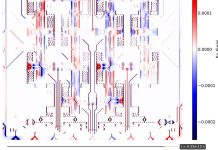Europe is home to 32% of the world’s quantum technology companies, with the majority based in the EU. This puts Europe ahead of the United States (around 25%) and significantly ahead of China (5%) in terms of the number of companies
More than half of these European companies have been founded since 2018, showing strong momentum and innovation.
However, Europe is still falling behind in a crucial area, specifically patents. The EU currently accounts for only 6% of global quantum patenting. In comparison, China leads with 46%, followed by the US with 23%. This gap highlights a key challenge: while Europe is generating startups and research, it’s not translating them effectively into protected innovations and market-ready technologies.
Lacking in coordination
From 2012 to 2024, the European Commission invested over €2 billion in quantum technology. Member States and private investors have also made significant contributions. Globally, about €6 billion in private venture capital has flowed into the quantum sector, with increasing interest in more mature companies.
Despite this, experts warn that Europe’s funding and policy efforts are too fragmented. With various EU-level programmes, national initiatives, and international collaborations operating in silos, startups struggle to scale. Many European quantum companies are small and in the early stages, often lacking the coordinated support needed to grow and compete globally.
A more focused EU industrial strategy is needed to consolidate efforts, increase efficiency, and ensure that funding reaches high-impact projects. The current approach spreads resources too thinly across many small initiatives, limiting progress toward commercialisation and global leadership.
Research and collaboration on the rise
Europe still holds a strong position in quantum research. Recent years have seen strong growth in EU patent applications, with filings more than doubling between 2021 and 2024, even as global patenting rates slowed.
Publication activity in quantum computing also shows a consistent upward trend, showing the region’s commitment to advancing scientific knowledge.
European organisations are also highly open to international collaboration. Around 23% of EU patent applications are co-patented with non-EU partners, mainly from the US. This openness is a strategic advantage in a field that thrives on shared expertise.
The EU is also well-represented in global standards-setting bodies for quantum technologies, helping shape future frameworks that will guide development and interoperability.
A digital future
Quantum technologies promise revolutionary advances in computing, communication, and sensing. From ultra-secure quantum messaging to GPS-free navigation and faster drug discovery, the potential applications are vast and transformative.
For Europe, success in quantum technology is about more than innovation; it’s a matter of economic security and industrial competitiveness. By turning scientific breakthroughs into real-world products and services, the EU can boost its technological sovereignty and support strategic sectors like defence, cybersecurity, and healthcare.
The EU needs to simplify and align its funding programmes, support scale-up efforts for startups, and strengthen its position in patenting and product development.











